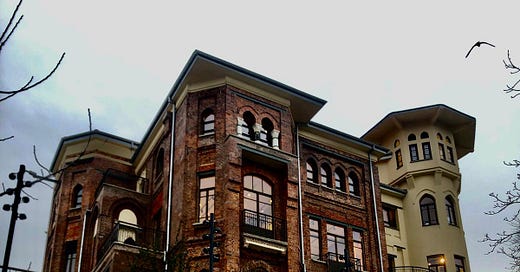Bulgur Palace: A Mysterious Istanbul Mansion Unveiled After a Century
The majestic Bulgur Palace stands atop one of Istanbul's historic hills, gazing out over the Marmara Sea since 1926. For decades it was closed off and hidden in obscurity, but not anymore.
Years ago, prior to entering the Yenikapı metro station, for the first time I noticed an unusual building perched on a hill at the top of Aksaray. Curiosity led me away from the metro and up the incline, where I got as close as I could to the mystifying structure, which was tucked in behind a broad, imposing stretch of aging brick walls that imbued it with the aura of a forgotten fortress.
This was the beginning of 2015, and I had just purchased a smart phone for the first time, so being able to post online from wherever I was standing was quite novel. Not knowing a thing about this handsome and intriguing edifice, I shared a photo on Facebook and asked if anyone knew what it was. A fellow Istanbul enthusiast chimed in with a link to a page with some history of the Bulgur Palace.
The moniker of this mansion comes from its original owner, an Ottoman soldier, politician and businessman known as “Habip the Bulgur King” as he was a merchant who sold bulgur, wheat and barley. Born in the Black Sea province of Bolu in 1878, Habip commissioned the palace in 1912. Completed in 1926 in the First National Architectural Movement style, which blended early-20th century modernism with classic Ottoman motifs, some sources indicate that it was designed by the iconic Levantine architect Giulio Mongeri, who indeed built a number of exquisite buildings in this style in Istanbul and Ankara between 1912 and 1932. However, there is no concrete evidence that Mongeri has his signature on it, and no indication as to who else may have designed it, which if anything increases the peculiar nature of the palace.
Keep reading with a 7-day free trial
Subscribe to FLANÖR to keep reading this post and get 7 days of free access to the full post archives.




